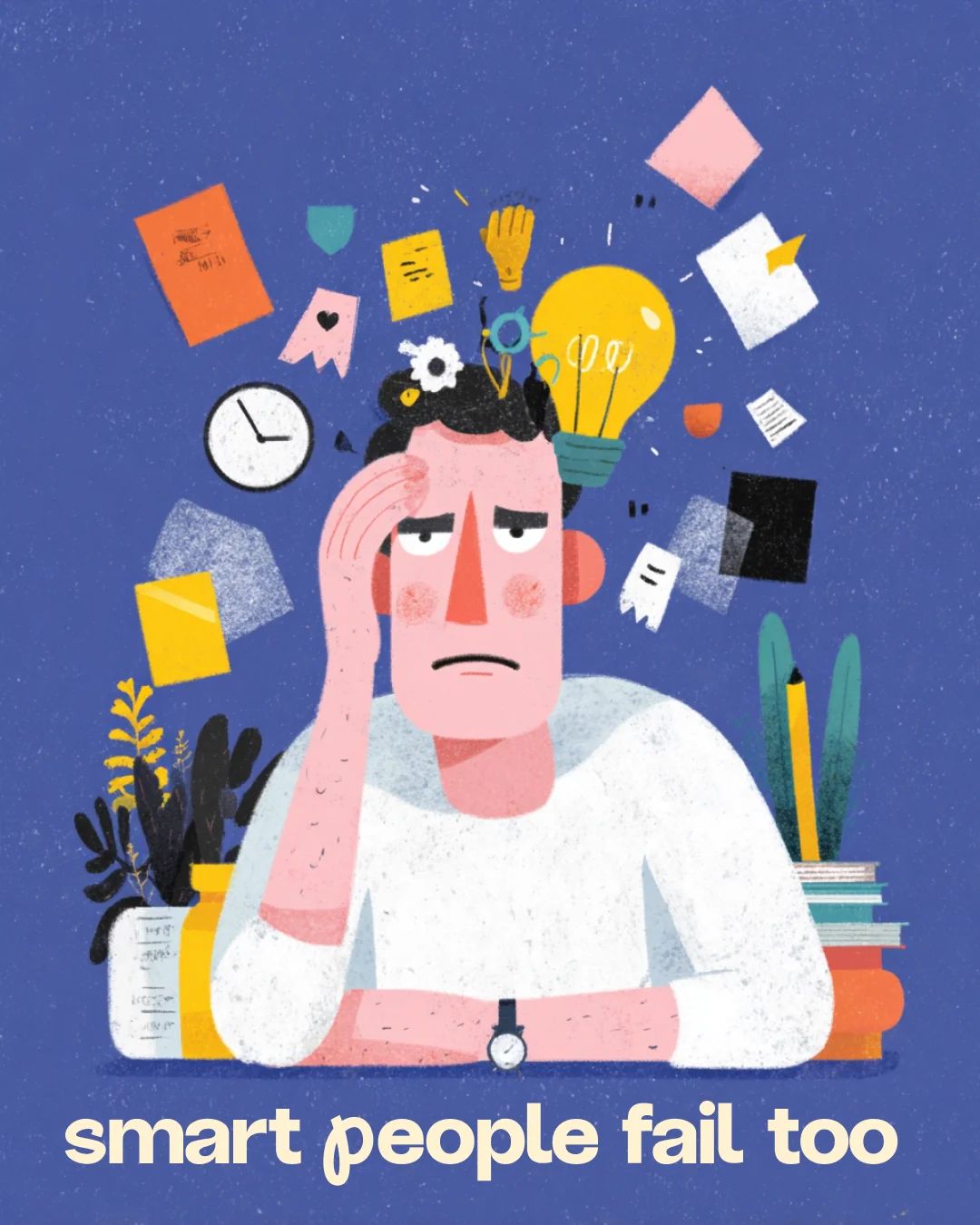"Just be confident."
It's the most useless interview advice ever given.
Because confidence doesn't come from deciding to feel confident. It comes from having evidence that you're capable.
And the only way to get that evidence is through practice.
The Confidence Paradox
Here's the trap most candidates fall into:
"I'll practice once I feel more confident."
But confidence doesn't magically appear. It's built through the very thing you're avoiding: practice.
The real equation: Practice → Evidence → Confidence → Better Performance
Not: Confidence → Practice → Better Performance
You can't fake your way into feeling confident. You have to earn it.
What Confidence Actually Is
Confidence isn't a personality trait. It's a prediction about future performance based on past evidence.
When you say "I'm confident I can answer this question," what you're really saying is:
"Based on my past experience answering similar questions, I predict I'll do well."
If you have zero practice answering interview questions, your brain has zero evidence to base that prediction on.
Result? You're not confident. And you shouldn't be.
The Two Types of Confidence
False Confidence (The Dangerous Kind)
"I know my experience. I'll just talk about it naturally. I don't need to practice."
This is confidence based on:
- Overestimating your abilities
- Ignoring the difficulty of the task
- Assuming knowing = performing
What happens: You walk into the interview unprepared, freeze when they ask a question, and walk out knowing you blew it.
This is Dunning-Kruger confidence—the less you know about interviewing, the more confident you feel.
Earned Confidence (The Real Kind)
"I've practiced this answer 10 times. I know I can deliver it clearly even when I'm nervous."
This is confidence based on:
- Actual repetition
- Seeing yourself improve
- Evidence that you can perform under pressure
What happens: You walk into the interview knowing you're prepared. When they ask a question, you deliver. You walk out satisfied.
This is evidence-based confidence—built through deliberate practice.
The Confidence Feedback Loop
Here's how practice builds confidence:
Round 1: You have zero confidence
- You record yourself answering "Tell me about yourself"
- It's awkward and rambling
- You realize you're not as good as you thought
- Confidence drops (this is normal)
Round 3: Small evidence appears
- Your answer is slightly smoother
- You eliminated some "ums"
- You stayed under 90 seconds
- Confidence starts building
Round 5: Pattern recognition
- You notice you're consistently improving
- Each practice is better than the last
- You start to believe "I can actually do this"
- Confidence grows
Round 10: Automaticity
- The answer flows without thinking
- You've done this enough times that your mouth knows what to say
- Confidence is now unshakeable
At no point did you use positive thinking. You just practiced until your brain had enough evidence to predict success.
The Neuroscience of Earned Confidence
When you practice a skill repeatedly, three things happen in your brain:
1. Neural Pathways Strengthen
First time answering: Your brain is building new connections 10th time answering: Those connections are highways
Result: The behavior becomes easier and more automatic
2. Your Brain Predicts Success
Your brain constantly makes predictions: "Can I do this?"
With no practice: "I don't know. Probably not. DANGER." With lots of practice: "I've done this before. I'll be fine."
Result: Lower stress response, better performance
3. Confidence Chemical Boost
Successfully completing a task releases dopamine (reward chemical)
Each successful practice session reinforces: "I did it. I can do it again."
Result: Building confidence feels good, which motivates more practice
This is a virtuous cycle—but only if you actually practice.
Stop Guessing. See Exactly How You Sound.
Reading about interviews won't help you. Speaking out loud will.
Get specific feedback on what's working and what's killing your chances. Know your blind spots before the real interview.
Why Visualization Alone Doesn't Work
Some advice says: "Just visualize yourself succeeding in the interview."
Research shows visualization helps—but only if you've actually done the thing before.
Why?
- Your brain can't visualize what it hasn't experienced
- Imagining success without evidence creates false confidence
- When reality hits, you're unprepared
What does work: Practicing first, THEN visualizing
After you've practiced answering a question 5 times, visualizing yourself doing it in the interview reinforces the neural pathways you've already built.
But visualization without practice? Just fantasy.
The Confidence Lag
Here's what frustrates people:
Practice 1-3: Confidence doesn't improve (you're discovering how bad you are) Practice 4-7: Confidence slowly builds (you're seeing small wins) Practice 8-10: Confidence jumps (automaticity kicks in)
Most people quit at practice 2.
They think: "This isn't working. I don't feel more confident."
But confidence lags behind practice. You have to push through the discomfort before the confidence arrives.
The Evidence Journal
Here's a powerful technique: Track your evidence.
After each practice session, write down:
- What improved? (Even tiny things count)
- What got easier? (Noticing progress builds confidence)
- What surprised you? (Unexpected wins reinforce belief)
Example:
Practice 1: Went way over time, lots of ums, felt awkward
Practice 3: Under 90 seconds! Still some ums but improving
Practice 5: Zero ums! Answer feels natural now
Practice 7: Can answer while distracted—it's automatic
Reading this list before your real interview gives your brain concrete evidence: "I've prepared. I'm ready."
The Confidence Transfer Problem
You might feel confident practicing alone in your room.
But then you get in the real interview and your confidence vanishes.
Why? Because confidence is context-dependent.
Solution: Practice under conditions that mirror the real thing
- Practice speaking out loud (not in your head)
- Use a webcam if it'll be a video interview
- Time yourself (add pressure)
- Practice when you're slightly nervous (simulate real conditions)
The more your practice environment matches the real interview, the more your confidence will transfer.
The Social Proof Effect
Confidence also comes from seeing others succeed.
This is why testimonials and success stories matter:
"If this person practiced and succeeded, maybe I can too."
But here's the key: You have to actually practice. Reading about someone else's success doesn't make you confident—it just shows you the path.
Your confidence comes from walking that path yourself.
The Impostor Syndrome Antidote
Impostor syndrome says: "I don't belong here. I'll be exposed as a fraud."
The antidote isn't positive thinking. It's evidence.
When you've practiced your answers 10 times:
- You have proof you can do this
- You're not faking—you're prepared
- You're not an impostor—you've done the work
Confidence doesn't eliminate impostor syndrome. Preparation does.
The Comparison Trap
You watch someone else nail an interview on YouTube and think:
"They're so confident. I'll never be like that."
Here's what you don't see:
- How many times they practiced before that video
- How many failed attempts they had
- How long it took them to get that good
Everyone starts awkward. The confident ones just practiced more.
The Bottom Line
You can't think your way into confidence.
You can't read articles about confidence and suddenly feel it.
You can't visualize success without having actually practiced.
Real confidence is earned through evidence: repeated practice that proves to your brain you're capable.
The formula is simple:
- Practice deliberately
- Track your progress
- See yourself improve
- Build evidence that you can perform
- Confidence emerges naturally
No affirmations needed. No fake-it-till-you-make-it. Just evidence.
Related Reading:
- Why Smart People Fail Interviews - The Confidence Paradox
- The Amygdala Hijack - Why Your Brain Betrays You
- 5-Minute Daily Practice Habit
- Deliberate Practice System
Ready to build real confidence through practice?
Try Revarta free - no signup required—systematic practice, visible progress, earned confidence.
Because the only confidence that matters in interviews is the kind you've earned.



